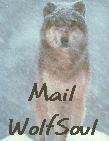![[To Crossbow Page]](to-xbow.gif)
|
![[To Medieval Period Page]](../to-medieval.jpg)
|

|

|
Added 22 February 2003
Most of the information I have regarding crossbow bolts comes courtesy of Robin Allen, a master bowyer, good friend, and all-around great guy. Cheers Robin! I owe you more than you know!
The most commonly used woods used for crossbow bolts in the Medieval Period were yew, ash, witchhazel, poplar, some of the fruit woods such as apple and plum. Yew, of course, was highly treasured for making longbows, and I have heard it said that yew was not used for arrows (and presumably bolts) much because of that. Because arrows and especially bolts could be made from pieces of yew too small for a bow I don't believe this is a valid argument. Bolts are often not knocked, as the track on the tiller keeps the string on the bolt. The fletches were commonly made of leather, wood, and occasionally feather and card (I'm not sure what card is). They were most commonly fletched with leather.There are many types of heads for bolts. There were heads for piercing leather and maile (the very common quarrel), stunning birds, cutting rigging, homicide (the Italian quadrello), smashing armour (the coronel) and fire bolts.
For a short description of how to make the bolts, I am going to have to fall back on Robin entirely, as I have not had the chance to make my own bolts or even see them being made. So, from Robin: "How do we go about making these. This is the way I do it and I have found it very successful, firstly we'll deal with the fletches, assuming we are going to use leather. What I did was I bought a little feather chopper, modified the cutting blade to the standard medieval fletch shape, put my piece of leather onto the block a swift whack with a mallett and presto you have a medieval fletch. You don't need thick leather fairly thin stock, with this little fleather cutter you can literally cut hundreds an hour.
"Next problem bolts - to obtain the standard medieval shape you need a wood lathe and some form of copier. What I did was I made a plate that fitted onto the bed of the lathe I then elevated a block slighly larger than the bolt length that I was making, now this is your standard bed for copying you now make a shape out of plexiglass of the shape of the crossbow bolt you require, this is bolted to the block of the plate but you need to elongate the holes so you have some adjustment. Now you have the standard pattern of your crossbow bolt.
"Now we have to be able to cut it and the way I did this was, I took a piece of 1" x 2" wide piece of aluminium, the length needs to be higher by about 2" than the centers of your lathe. You need to fix this piece of aluminium to a right angle so that it can ride flat on the table you have already made. Now you need to drill two holes in this. First hole needs to be dead in line with the edge of your pattern so when you put a probe through it will ride up against the pattern. The second hole needs to be dead center with the lathe center. This is for the cutter. You can use a piece of drill rod but it would have to be about 3/8 in dia. to give you some strength and you have to shape this to be able to cut wood. You should now be able to cut out your basic crossbow bolt shape.
"The next problem is cutting the groove to glue in the fletches, I have a rig that I use using a router, again this is quite complex . . . .
". . . As far as the heads are concerned I cast them in bronze which makes it very easy to make them once you are set up. I usually cast about 20 at a time, then all you have to do is bore them out to fit onto the bolt you have made." Robin can probably help you by completing some of these tasks, then you can assemble the pieces. Many people do not have the equipment needed to make a bolt from scratch, but Robin does, and his work is excellent.
![[To Crossbow Page]](to-xbow.gif)
|
![[To Medieval Period Page]](../to-medieval.jpg)
|

|

|